Part Five — The Seven Universal Emotions — Disgust
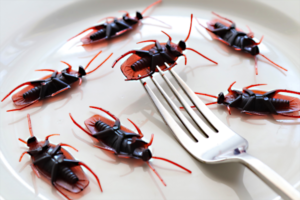 Disgust is another of the universal emotions displayed and recognized across all cultures, though the stimulus which triggers disgust often varies from one culture to the next. Even those who are blind or deaf will display and understand this emotion.
Disgust is another of the universal emotions displayed and recognized across all cultures, though the stimulus which triggers disgust often varies from one culture to the next. Even those who are blind or deaf will display and understand this emotion.
Disgust originally involved the senses of sight or taste in response to something revolting. The emotional expression of disgust likely has a biological origin, enabling us to show others that something is unsafe and to be avoided. Disgust is the most physical of all the basic emotions, accompanied by a sensation of nausea and a reaction of retching or choking.
As we evolved into a more social species, the emotion of disgust has also evolved from the physical protection of the body to protection of morals, values and the social order. It is the primary emotion felt in prejudice, xenophobia and stigmatization. As such, it can be manipulated, becoming a very dangerous emotion indeed.
Disgust
The term disgust comes from the old French dégouster — literally, to lose one’s appetite, and can be directed at physical objects, moral actions, social situations, groups of people, and even oneself.
A feeling of disgust alerts us to physical and moral danger. Becoming aware of it and its impact on our lives helps us to understand and limit its effects to keeping us safe and healthy.
The Purpose of Disgust is Avoidance
Disgust a feeling of revulsion or strong disapproval aroused by something unpleasant or offensive, and it is triggered both by the physical senses and by the ideas and actions of other people. It is a powerful core emotion, an anti-pathogen adaptation which evolved to keep us safe and healthy, away from things which were potentially dangerous or damaging — eating spoiled or rotting food, avoiding something putrid, staying away from open sores to avoid catching an infection or disease, removing or covering up bodily wastes to prevent illness. It facilitates survival by immediately expelling something that could make us sick, like a poisonous berry or rotting meat.
Perhaps because pathogens and parasites transmit within and across groups of people, the emotion of disgust has become central to the dehumanization of others who look and sound different or whose society conflicts with our own values and beliefs.
Dehumanizing them by making them “morally tainted” allows us to believe that our own ostracizing behaviour is perfectly acceptable, where it would normally be considered immoral within the community of our own tribe or customs.
Disgust Triggers
There are several states of disgust which vary greatly, based on one’s personal and cultural understanding of what is offensive.
Physical Disgust, triggered by sights, smells and/or tastes of something repulsive, toxic or otherwise aversive.
Moral Disgust, triggered by the rejection of behaviours, actions, ideas and appearance of other people, even animals.
Cultural Disgust, triggered by the customs, ideas and cultural norms of a different society or caste.
Self-Disgust, triggered by a lack of self-esteem, which may arise from repeated criticism, humiliation and disparagement.
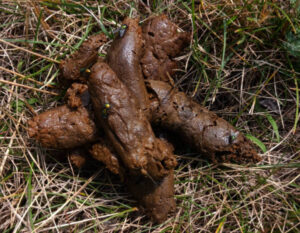 Physical Disgust
Physical Disgust
Our emotions evolved to keep us safe and ensure our survival as a species. Disgust has origins in eating, food and ingestions, with the universal trigger being the feeling that something is dangerous, poisonous or contaminating.
Physical Disgust induces behaviours like nausea, choking and vomiting, preventing pathogens from entering the mouth, or ejecting possibly harmful materials which have already entered the mouth and digestive system.
Physical disgust may be triggered by exposure to:
- Smells, tastes, sights, sounds, touch/texture
- Something putrid, rotten, diseased or dying
- Physical damage, injuries or violation of the body
- Surgeries, exposure to internal organs
- Expelled or ejected bodily wastes and products like faeces, vomit, urine, mucus and blood
- Death
 Moral Disgust
Moral Disgust
Moral disgust is the nearly universal repugnance people feel toward extremely bad conduct. For example, child abuse, rape, animal beating, or political corruption.
We feel disgusted by contact with moral offences — behaviour that contradicts our own deep-seated values and beliefs, and so we associate this “different” behaviour with “unhealthy”. Our morality is based on our sense of right and wrong, what we consider to be correct thinking. And our language reflects this feeling of disgust when we label criminals as “slime” or “scum” and criminal activity as “stinking” or being “fishy”.
Moral disgust may be triggered by exposure to:
- A person, animal or thing one considers physically ugly
- Poor hygiene
- Reminders of death or injury
- Sexual preferences, inclinations or practices
- Servitude, slavery
- “Isms”, such as racism, ageism, sexism
- Political or religious views
All moral violations involve harm. Disgust is aimed at the moral character of the one harming others. We feel it when we see a moral violation being done to another person. Anger is a secondary response to our disgust regarding the perpetrator’s actions. We feel anger and indignation when a moral violation is done to us, or we witness it being done to another.
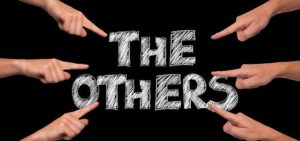 Cultural Disgust
Cultural Disgust
Cultural disgust is similar to, and likely arises from, moral disgust. It is a repudiation of the accepted beliefs held by a different culture and is partially a result of social conditioning. Different cultures are disgusted by behaviours, actions, customs and traditions that run counter to their own.
As an example, far-right extremists, both political and religious, feel disgust at the laissez-faire attitude of liberals. And vice versa.
Other cultural habits such as certain types of food can trigger disgust in individuals who may have learned to avoid them, for example, eating insects, organ meats or certain animals such as dogs or guinea pigs which have been “humanized” as pets.
Throughout history, bigots and tyrants have deliberately used disgust-inducing imagery and propaganda to contaminate minority groups by association with vermin, infestation, and disease. It becomes much easier to dehumanize and degrade such people when the implication is that they are disgusting, and therefore not worthy of notice. From there, it’s a short step to control and/or elimination.
Cultural disgust may be triggered by exposure to:
- Religious or political differences
- Certain foods
- Sexual preferences and liberties
- Propaganda
- Social habits
- Foreign customs and traditions
- Unfamiliar rituals and observances
 Self-Disgust
Self-Disgust
Perhaps one of the most insidious and destructive types of disgust is self-disgust — when a person is grossed out by one’s own behaviour, body or bodily functions, personality, intellect, desires or interests. This kind of disgust usually arises from repeated criticism or abuse in early life by parents, teachers or others in authority.
This particular form of disgust can become a state in which one’s very core is considered revolting and unendurable, resulting in feelings of inadequacy, dysfunctional thoughts, and depression. The sufferer feels unworthy, unlovable, and loathsome to others.
Self-disgust is common in those with depression, substance use disorders, obsessive-compulsive disorder, eating disorders, borderline personality disorder and narcissistic personality disorder.
Development of Disgust
Young children seem to associate the facial expression of disgust in adults with anger. The emotion of disgust rarely begins to develop until sometime between the ages of four and eight years of age and correct interpretation of the expression of disgust in others doesn’t develop until later, usually around ten years of age.
Children and adolescents, even some adults, often find disgusting things fascinating or humorous. Kids aren’t bothered by some things that adults find disgusting, often embracing the inherent humour to get a rise out of adults. For example: poop emojis, bathroom humour, chocolate bar shaped like poop, etc.
 What to Look For
What to Look For
The facial expression of disgust not only shows our distaste to others, but it also works to protect us. Wrinkling the nose closes the nasal passage, protecting it from unwelcome or offensive external elements. Squinting the eyes shields them from harm.
The facial expressions most closely connected with disgust are related to vomiting or to otherwise removing something from the mouth or preventing something from entering the mouth.
Facial Expressions of disgust can be:
- Curled upper lip
- Eyebrows lowered, pinched together
- Lowered jaw, open mouth
- Wrinkling on the side and bridge of the nose
- Lips turn down in an inverted “U” shape
- Tongue sticks out
- Head may be slightly turned away
- Eyes squinting
- Raised upper lip
- Raised cheeks
- Protruding lower lip
- Puffing out the cheeks with a fist against the mouth
- Face going white
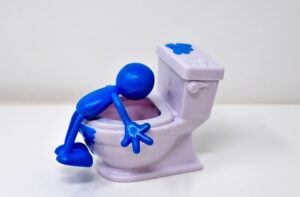 Physiological Responses
Physiological Responses
In addition to facial expressions, there are involuntary bodily reactions that take place as well. The physical characteristics of disgust are:
- Revulsion in the mouth, throat, and/or stomach
- Queasiness, nausea
- Choking
- Involuntary gagging
- Involuntary ugh sounds
- Sour tang in the mouth
- Physical repulsion
- Skin tightening (crawly sensation)
- Horripilation (body hairs rising)
- Vomiting
- Gagging
- Frequent swallowing
- Acid burning in the throat, acid stomach
- Tense, tight muscles
- Wincing
- Dizzy
- Stomach ache, stomach clenching
 What the Character Feels — Emotional Responses
What the Character Feels — Emotional Responses
The contaminating power of disgust is enduring, as witness the sequence of the chocolate pie in the movie, “The Help”. Ever since I saw that movie, I’ve been unable to eat chocolate pie or any dessert that resembles it. The mental and emotional associations I have with that scene have made chocolate pie disgusting. And it’s highly unlikely we’d be likely to drink from a sterile bedpan. The associations with disgust are too strong.
In a scientific study of physiological reactions to both moral and physical disgust triggers, the physical trigger elicited a feeling of dirtiness and a desire to be clean, the moral trigger evoked more emotional reactions — indignation, anger and contempt.
Intimacy lowers the threshold for what we consider disgusting. When the disgust reaction is to someone close to us, we can overcome our initial reaction in order to care for them. Changing a diaper or cleaning up vomit, for example.
The emotional and psychological characteristics of disgust are:
- Feeling dirty, unclean
- Feeling unworthy
- Shame, Guilt, Revulsion, Reluctance, Unease
- Agitated
- Violated
- Numb
Associated Emotions
Disgust can lead to further layers of emotion such as:
- Contempt, Scorn, Indifference, Rejection
- Fear, Shock, Betrayal
- Contempt
- Indignation, Outrage, Self-righteousness
- Anger, Antipathy, Judgment
- Depression, Disillusionment
- Humour
- Fascination
- Pity
 What the Character Does — Involuntary Physical Reactions (body language)
What the Character Does — Involuntary Physical Reactions (body language)
- The physiological responses as listed above
- Stopping suddenly (if moving forward)
- Shuddering
- Flinching, wincing
- Leaning away
- Toes curling up
- Making a retching sound or vocal expressions of disgust, such as “yuck”, “ugh” or “ew”
- Rubbing at one’s nose or mouth
- Spitting
- Turning the head or body away from the source of disgust
- Covering the nose/mouth
- Hunching over, or lurching forward and grabbing the abdomen, making a gagging sound
- Dry-washing the hands
- Rubbing at one’s exposed forearms
Subsequent reactions (after initial mental processing):
- Feeling unclean
- Wishing to be somewhere else
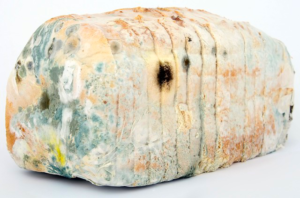 Physical Disgust
Physical Disgust
- Retreating, distancing oneself from the source by walking away or closing the eyes.
- Averting the gaze
- Hand coming up and rejecting or waving away (especially strong smells)
- Need to feel clean – scrubbing to the point of abrasion
- A compulsion to flee
Moral or Cultural Disgust
- Demanding that someone stop speaking or desist what they are doing
- Eyes that appear cold, dead, flat
- Repeating what someone has said, purposely devoid of all emotion
- Shunning or offering evasive answers
- Walking away to regain composure
- The mind replaying what was seen over and over
- Offering a frozen or watery smile
- Forcing oneself to maintain eye contact
- Waving a hand as if something doesn’t matter
- An intense need to flee the source
- A need to conceal one’s true feelings
- Rigid self-control to avoid/prevent violence
- Desire to retaliate
Spectrum of Disgust
(from weakest to strongest)
Disgust is the opposite of trust on the emotion wheel. A mild form of disgust is boredom, while a more intense version is loathing.
- Boredom
- Dislike
- Aversion
- Distaste
- Repugnance
- Revulsion
- Abhorrence
- Loathing
Types of Disgust and How to Use Them in Storytelling
 As writers, we can use disgust to our advantage in crafting our characters. When we accurately describe the facial and physical expressions of disgust in our writing, it triggers the same feelings in our readers. Seeing someone else’s facial emotional expressions triggers a neural activity (known as neural feedback) that relates to our own experience of the same emotion. Even when we are not in the presence of something disgusting, making or witnessing the facial expression of disgust leads to an increased feeling of disgust.
As writers, we can use disgust to our advantage in crafting our characters. When we accurately describe the facial and physical expressions of disgust in our writing, it triggers the same feelings in our readers. Seeing someone else’s facial emotional expressions triggers a neural activity (known as neural feedback) that relates to our own experience of the same emotion. Even when we are not in the presence of something disgusting, making or witnessing the facial expression of disgust leads to an increased feeling of disgust.
A character who is disgusted by and fearful of, another person, culture, or object, could be subconsciously motivated to avoid them at all costs. This would limit his options and choices, such that until he understands and overcomes this emotional response, he would be unable to move towards his goal. If story is about character transformation, then this could be the character’s flaw, wound or need.
Every story needs an antagonist, so making our villain a cruel, self-obsessed bully with habitual behaviour that disgusts our protagonist can provide a powerful foil for the choices our hero makes in order to improve his world. Even the bad guy needs a psychological backstory, so the deeper you make his character, the more your protagonist has to oppose and overcome.
In interpersonal relationships, self-disgust functions differently from disgust directed towards other people or objects. Disgust aimed towards others results in much harsher judgments of perceived offences, while self-disgust makes it difficult for the character to assign deserving punishment to others. In a character disgusted by himself, the sense of self-loathing is so pervasive, he cannot easily condemn others to punishment because, deep down, he feels that he also deserves to be punished.
Self-disgust can manifest as a deep sense of never being good enough. The emotion of disgust evolved to keep us safe and away from things that could harm us, but what do we do when the thing that disgusts us is us? A character who feels this way is incapable of feeling confident. This is a shame-based psychological defect that the character can’t face. He is continually pushing these feelings of self-disgust under the rug, so his behaviour reflects it in several ways.
One driving motivation for a character with this fundamental emotion would be to avoid, at all costs, letting others know how unworthy he is. He can hide this revolting side of himself from others, but never from himself. Toxic behaviours like narcissism, bullying, blaming, self-hatred and suicide are all a result of self-disgust.
The character may project his sense of shame onto others, so that he can briefly feel “better” than them, or he may loudly trumpet his own superiority in an attempt to convince others that he’s okay. Deep down though, he knows he is deeply flawed. The more he denies his self-disgust, the more toxic his behaviour becomes. He feels like a loser, so he acts like a bully to cover it up.

Alternatively, he could constantly put himself down, or use self-denigrating humour in order to deflect negativity, anger and abuse from others, showing that he already knows he’s worthless, so they don’t have to berate him.
Often, religious terms and imagery permeate the language of self-disgust, and such a character would see himself as an unredeemable sinner.
Self-disgust resulting from incontinence, injury, sepsis, overweight and glandular conditions, as well as lack of self-control and willpower, can manifest as bulimia, OCD, anorexia, and so on, some of the many ways the subconscious manifests to control or punish oneself, the object of disgust.
Disgust serves a purpose when appropriately applied, but when it’s focused on other people, cultures or differences in morality, and especially when it’s directed at oneself, it can be terribly damaging. Until a character can recognize and accept his emotional wounds, he can’t transform — he can’t become an authentic hero. Writers can use the objects of a character’s disgust to create a deeply flawed protagonist with a strong character arc as he learns to understand and deal with his misbeliefs.
For the next several weeks, we’ll continue exploring each of the Seven Universal Expressions of Emotion. Next time, we’ll cover Contempt.
Happy Writing!

If this information is helpful, useful or simply interesting to you, please leave a comment below and let me know. I’d love to hear from you.
Beverley Hanna
Trained as an artist in the late 1960’s and early 1970’s, I was one of the first creatives to be employed in the computer graphics industry in Toronto during the early 1980’s. For several years, I exhibited my animal portraiture in Canada and the U.S. but when my parents needed care, I began writing as a way to stay close to them. I’ve been writing ever since. I run a highly successful local writer’s circle, teaching the craft and techniques of good writing. Many of my students have gone on to publish works of their own. I create courses aimed at seniors who wish to write memoirs, with a focus on the psychology of creatives and the alleviation of procrastination and writer's block.
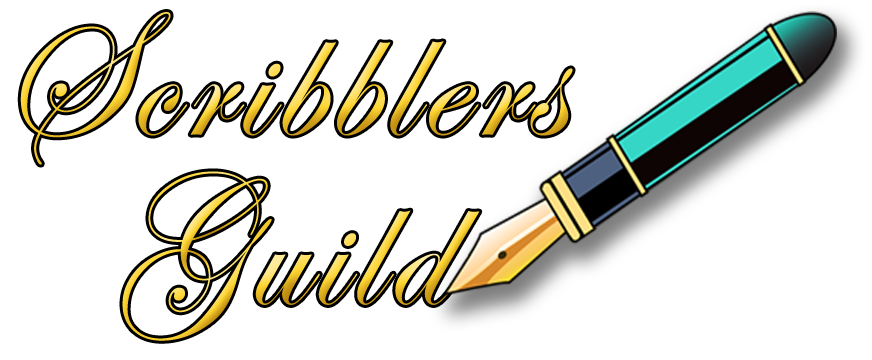
One Comment
Thomas Holmes
Dear Bev,
You know one of those moments when something you are suppose to see or read that connects you to something that’s acutually going on in your life- one could almost say this was put here for me- but you rather brush it off , because that would be impossible,- you tell yourself. Music is my main obsession- at times wondering , “am I ok” 😏 especially when you have to split your time between your piano and guitar. If that wasn’t fulfilling enough for the last few years I,ve become a “scribbler” I think you used that word somewhere. I am obsessed with pen and paper- something about it feels more heartfelt that a typewriter.
Any ways I’ll stop babbling and get to the point- could you send me some information on your writing classes- please.
One thing I learned today ” Artistic creativity / Obession ” is normal. Unfortunately it wont help me to sleep better , because now I know I have so much to do, thanks. 😄
Thankyou for the great article ,
Sincerely Thomas